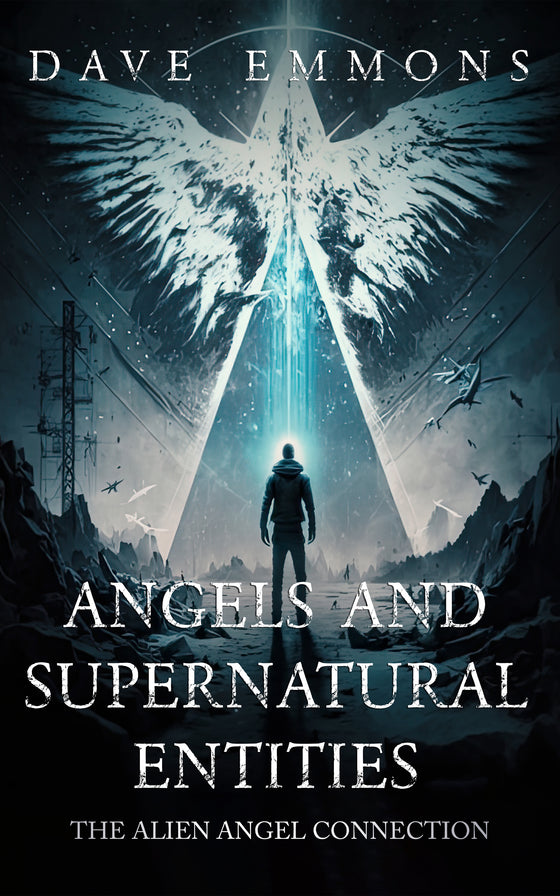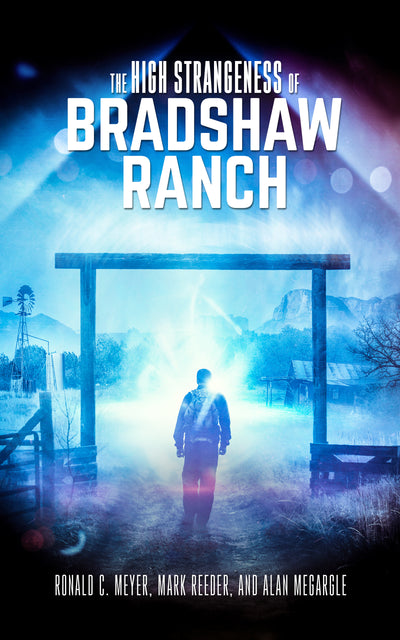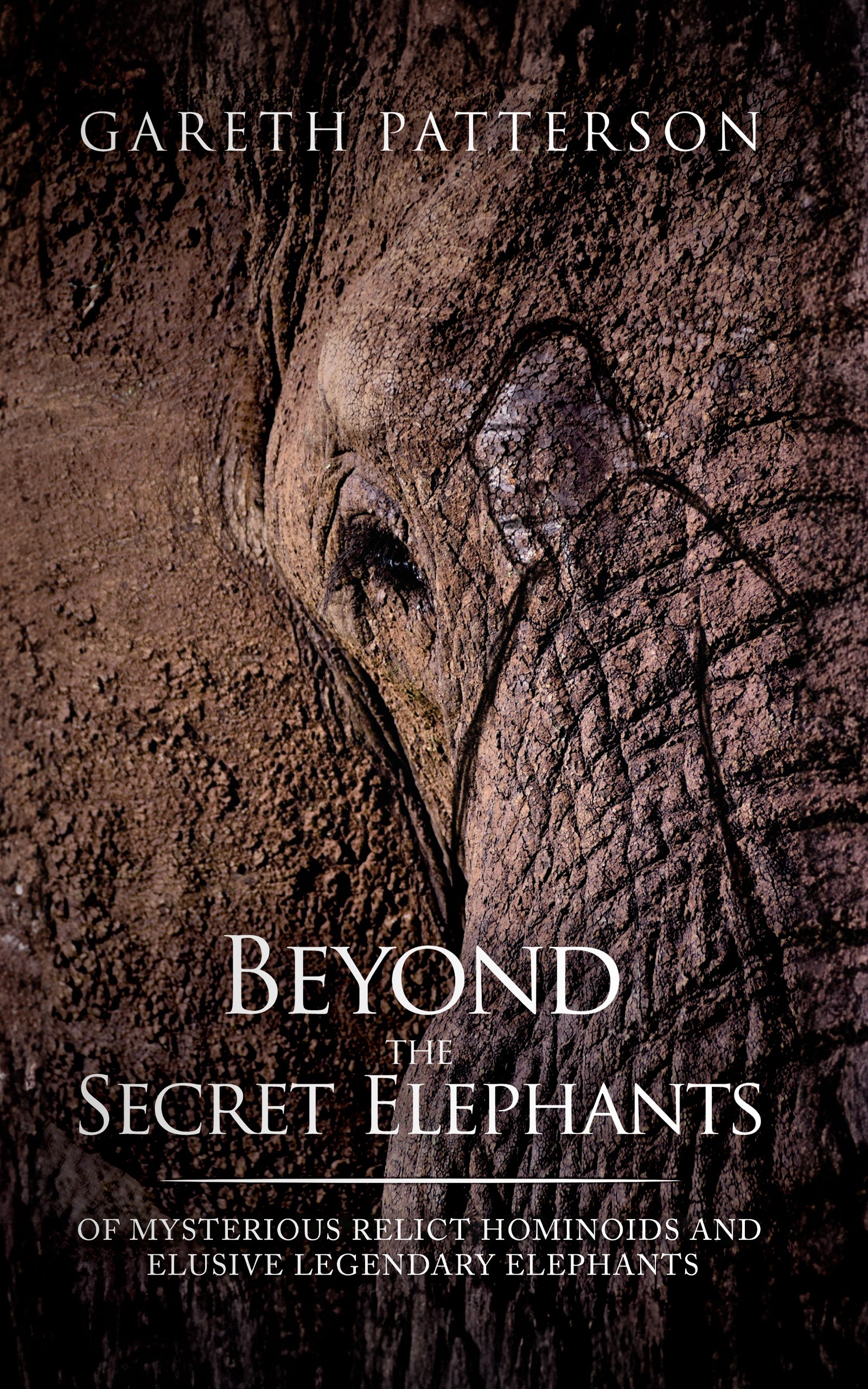Mysteries of Sanskrit Flying Machines (Vimanas)

By Vanessa Torres, Ufologist
The first time you encounter detailed descriptions of aerial vehicles and warfare in Sanskrit texts thousands of years old, your mind stumbles. These aren't vague mentions of gods floating on clouds or riding mythical beasts-they're technical explanations of flying machines with specific propulsion systems, capabilities, and weapons.
The aircraft described in these ancient Indian texts-known as Vimanas-challenge our understanding of technological development. We accept without question that the Wright brothers achieved powered flight in 1903, yet ancient Sanskrit records describe vessels that could fly between planets, become invisible, and unleash weapons of extraordinary power.
Consider the account in the Ramayana of the Pushpaka Vimana, a flying palace capable of carrying entire armies, or the Mahabharata's description of aerial battles where combatants wielded weapons that sound disturbingly like modern missiles and even nuclear devices. These aren't presented as fantasies but as matter-of-fact elements in historical chronicles.
Are these merely flights of mythological fancy? Or could they be distorted records of something real-whether ancient advanced technology or visitations from somewhere beyond Earth? Let's examine the evidence and theories surrounding these mysterious Sanskrit flying machines.
The Evolution of "Vimana": From Sacred Space to Skyborne Vehicle
The Sanskrit word "vimana" didn't always refer to flying machines. In its earliest usage, it described a measured or sacred space-specifically the tower above a temple's inner sanctum. The term evolved over time, first representing divine palaces, then the celestial dwellings of gods, and finally flying vehicles of various types.
By the time of the great Sanskrit epics (roughly 500 BCE to 400 CE), "vimana" primarily denoted sophisticated flying machines. The transition wasn't arbitrary-there's a conceptual connection between the sacred space of a temple and a vehicle that transports divine beings. Both represent points of contact between the earthly and celestial realms.
In the Rigveda, one of India's oldest sacred texts, we find references to mechanical birds and flying chariots. These early mentions include the Trichakra Ratha (a three-wheeled aerial vehicle), the Vidyut Ratha (a vehicle operating on power), and the Vayu Ratha (a wind or gas-powered chariot).
Modern Sanskrit scholars like Swami Dayananda Saraswati concluded that the Rigveda describes actual aircraft capable of remarkable feats: "going from one island to another with these crafts in three days and nights... jumping into space speedily with a craft using fire and water... containing 12 stamghas (pillars), one wheel, three machines, 300 pivots, and 60 instruments."
What's striking is how the terminology evolved with such specificity. Today, in several modern Indian languages, "vimana" simply means "aircraft"-a linguistic echo of these ancient accounts.
Flying Machines in Sacred Texts: Technical Details That Defy Expectation
The most famous vimana appears in the Ramayana-the Pushpaka Vimana, created by the divine architect Vishwakarma for Kubera, the god of wealth. Later stolen by the demon king Ravana, this flying palace could travel vast distances at the pilot's will. After Ravana's defeat, Lord Rama used it to return to his kingdom.
The description of the Pushpaka stretches beyond mere fantasy. It's portrayed as a double-decked circular structure with portholes and a dome, resembling what we might call a flying saucer. It made a "melodious sound" during flight and had the unique property that no matter how many people boarded, there would always be room for one more-what mathematicians might call an "N+1" capacity.
Even more remarkable is the Ramayana's account of the aerial view from the Pushpaka during Rama's journey. Some researchers claim this description matches the geographical features of the Indian subcontinent as seen from high altitude, raising questions about how ancient authors could have known such details without aerial perspective.
The Mahabharata takes these descriptions further, with a veritable catalog of different vimanas and their capabilities. King Salva possessed a vimana called Saubha that could become invisible, appear in multiple forms simultaneously, and move erratically between earth, sky, mountains, and water. The epic details aerial battles where these craft deployed sophisticated weapons systems.
One passage describes Arjuna's journey to celestial regions: "While becoming invisible to the mortals who walk on earth, he saw wondrous airborne chariots by the thousands... No sun shone there, or moon, or fire, but they shone with a light of their own acquired by their merits."
The Bhagavata Purana mentions King Citaketu "traveling in outer space on a brilliantly effulgent airplane given to him by Lord Vishnu." When Lord Shiva released arrows that "appeared like fiery beams emanating from the sun," they covered and obscured the "three residential airplanes."
These aren't isolated mentions but recurring elements woven throughout ancient Indian literature. The Jain text Kalpa Sutra describes the 24th Tirthankara arriving in a vimana called Pushpa-Uttara Aparijita, while other Tirthankaras traveled in vehicles named Jayanta and Vijaya. Even Emperor Ashoka's edicts from the 3rd century BCE mention aerial chariots in processions, suggesting their cultural significance.
The Mechanics of Flight: Ancient Technology or Creative Imagination?
The most technically detailed account of vimana construction appears in the Samarangana Sutradhara, an 11th-century treatise attributed to King Bhoja. It devotes 230 stanzas to the science of aerial travel, describing how to build a vimana that "can go by its own force like a bird-on the earth or water or through the air."
The text outlines a construction process using lightweight wood shaped like a bird with outstretched wings. Inside this structure, "the mercury engine with its iron heating apparatus" would be installed. When mercury in the engine was heated, it would develop "thunder power" and set a "driving whirlwind" in motion, allowing the pilot to travel through the air.
This description of a mercury-based propulsion system appears frequently across different texts. The Vaimanika Shastra elaborates further, describing a system that sounds remarkably like an ion propulsion engine-something NASA would only begin developing in the 20th century.
What's particularly striking is the mention of specific metals and materials. The Vaimanika Shastra lists alloys called "Somala," "Mourthwika," and "Soundaalika" that, when mixed in correct proportions, created 16 heat-absorbing alloys essential for flight. Modern researchers note that these materials cannot be identified today, raising the possibility of lost metallurgical knowledge.
Beyond propulsion, these texts describe astonishing capabilities that even modern aircraft can't match. The Vaimanika Shastra details 32 secrets a pilot must know, including techniques for:
- Making the vimana invisible (Adrishya)
- Hovering motionless in the air (Stabdhaka)
- Camouflaging by projecting different appearances (Roopaantara)
- Paralyzing enemy craft (Paroksha)
- Performing aerial reconnaissance (Roopaakarshana)
- Taking photographs of activities below (Kriyaagrahana)
While modern stealth aircraft, hover capabilities, and surveillance systems might parallel some of these functions, others remain beyond current technology. The texts describe navigation systems using atmospheric layers and celestial roadways, including the "Path of the Gods" (deva-yana) and the "Path of the Pitas" (pitr-yana), each with specific routes through the northern and southern celestial hemispheres.
Some researchers link these celestial pathways to cosmic energy flows, noting that the Bhagavata Purana describes mystics traveling along the "illuminating Susumna" (one of the sun's principal rays) to reach higher planets.
Ancient Aerial Warfare: Battles That Shook the Heavens
The warfare capabilities of vimanas form a central element in many Sanskrit texts, particularly the Mahabharata. This epic describes entire military campaigns conducted in the sky, with vimanas deploying weapons of frightening power.
When Krishna pursued his enemy Salva, whose vimana had the ability to disappear, he counterattacked with a special weapon: "I quickly laid on an arrow, which killed by seeking out sound." This description of a sound-seeking projectile bears an uncanny resemblance to modern acoustic homing technology used in missiles.
The Mahabharata also describes "Indra's Dart" (Indravajra), a weapon operated via a circular reflector that, when activated, produced a shaft of light that consumed its target-reminiscent of laser weapons currently in development.
Most disturbing is the account of the weapon used against the Vrishnis and Andhakas:
"Gurkha flying in his swift and powerful Vimana hurled against the three cities of the Vrishnis and Andhakas a single projectile charged with all the power of the Universe. An incandescent column of smoke and fire, as brilliant as ten thousands suns, rose in all its splendour. It was the unknown weapon, the Iron Thunderbolt, a gigantic messenger of death which reduced to ashes the entire race of the Vrishnis and Andhakas."
The aftermath description is equally chilling: corpses so burned they were unidentifiable, survivors whose hair and nails fell out, and food becoming contaminated-effects consistent with radiation poisoning following a nuclear explosion.
Some researchers connect these accounts to archaeological mysteries like the sudden abandonment of Mohenjo Daro and Harappa around 1900 BCE. These advanced Indus Valley cities show evidence of widespread destruction, with some controversial claims of radioactive ash being found at the sites. Skeletons discovered at Mohenjo Daro appear to have been flash-frozen in the middle of ordinary activities, suggesting a sudden, catastrophic end.
Reaching for the Stars: Vimanas and Interplanetary Travel
Perhaps most astounding are the descriptions of vimanas capable of interplanetary travel. The Vaimanika Shastra categorizes vimanas into those designed for different ranges: local travel, international journeys, and interplanetary voyages.
The Ramayana includes a detailed account of a journey to the moon in a vimana, including a battle with an Atlantean airship called a Vailixia. The Mahabharata mentions Arjuna witnessing self-luminous worlds that ordinary humans from Earth see only as stars.
These accounts speak of vimanas traveling through "solar and stellar regions" and describe vessels constructed specifically for traversing the vacuum of space. They mention technologies for life support during these journeys and detail the distinct atmospheric conditions of different celestial bodies.
Sanskrit texts also describe flying cities capable of sustained operation in space. The Mahabharata tells of Hiranyapura, a golden city inhabited by Daityas and Kalakeyas that was "airborne," "impregnable even to the Immortals," and "filled with all desires and virtues." When Arjuna encountered this flying city during his celestial travels, he had to use special divine weapons to overcome its defenses.
Similarly, the assembly halls of various deities are described as self-moving structures in the celestial regions. Indra's hall could "move at will," was "aerial," and measured "a hundred leagues wide and a hundred and fifty leagues long." Brahma's hall reportedly had an appearance that changed from moment to moment, being "made up of many different shapes, all very colorful and luminous."
The Vaimanika Shastra: Ancient Knowledge or Modern Creation?
No discussion of Sanskrit flying machines would be complete without addressing the controversial Vaimanika Shastra. This Sanskrit text on aeronautics first came to public attention in 1952 when G.R. Josyer, director of the International Academy of Sanskrit Research in Mysore, announced its existence.
According to Josyer, the text had been dictated between 1918 and 1923 by a Sanskrit scholar named Pandit Subbaraya Shastry, who claimed to have received it through psychic channeling from the ancient sage Maharishi Bharadvaja. The complete work reportedly contained 3,000 shlokas (verses) in eight chapters, with detailed diagrams added by a draftsman named T.K. Ellappa under Shastry's direction.
The Vaimanika Shastra provides remarkably detailed information about vimana construction, describing 31 essential parts and 16 materials used in their manufacture. It explains various types of vimanas including the Rukma (conical, golden), Sundara (rocket-shaped, silver), Tripura (three-storied), and Sakuna (bird-like).
The text's authenticity became a major point of contention after a 1974 study by researchers at the Indian Institute of Science in Bangalore. The study concluded that the aircraft described were aerodynamically unsound and "a decided impossibility," showing "a complete lack of understanding of aeronautics." The researchers noted that the drawings definitely indicated knowledge of modern machinery, likely because Ellappa had engineering college training.
Despite these criticisms, the Vaimanika Shastra continues to fascinate researchers of ancient technology. Supporters argue that we may not fully understand the principles being described, especially given the text's references to materials we cannot identify today. They point to the detailed nature of the work and its consistency with other ancient accounts of vimanas as evidence of its authenticity, at least in part.
Through Different Lenses: Ways to Interpret the Vimana Mystery
How should we understand these detailed accounts of ancient flying machines? Three primary interpretations have emerged:
- The Mythological View: Conventional scholars typically view vimanas as purely symbolic or mythological. They argue that ancient texts used fantastical elements to express spiritual concepts or simply to entertain. The detailed technical descriptions might be seen as poetic license or later embellishments.
- The Lost Technology Hypothesis: Some researchers propose that vimanas represent evidence of a highly advanced ancient civilization that possessed technology we are only now rediscovering. They point to India's documented achievements in mathematics, metallurgy, and medicine as evidence that ancient Indian civilization may have reached scientific heights we're only beginning to appreciate.
- The Ancient Astronaut Theory: A third perspective suggests that vimanas were actually extraterrestrial spacecraft, and the "gods" who piloted them were visitors from other worlds. Proponents note striking similarities between ancient vimana descriptions and modern UFO reports, including saucer shapes, extraordinary maneuverability, and advanced capabilities like invisibility.
These interpretations need not be mutually exclusive. Sanskrit texts might preserve fragmentary memories of actual technologies, perhaps observed from extraterrestrial contact, later embellished and woven into cultural and spiritual frameworks.
What makes the vimana accounts particularly compelling is their technical specificity. Rather than vague references to "divine chariots," we find detailed discussions of mercury vortex engines, heat-absorbing alloys, and aerial weaponry. These descriptions follow internal logic and consistency across different texts and time periods.
Vimanas in Modern Context: Ancient Mysteries Meet Contemporary Science
The subject of vimanas has experienced a resurgence of interest in recent decades. In 2015, the Indian Science Congress included a controversial symposium on "Ancient Sciences through Sanskrit," featuring a presentation on the Vaimanika Shastra that claimed ancient Indian aircraft could travel between planets.
The presentation sparked intense debate, with NASA scientist Ram Prasad Gandhiraman launching a petition against what he called "pseudo-science." Yet interest persists, with some noting parallels between vimana propulsion concepts and NASA's own experimental technologies, including ion engines that use electric fields to accelerate charged particles.
Beyond scientific circles, vimanas have permeated popular culture, appearing in books, films, and video games. The 2015 Bollywood film "Hawaizaada" portrayed Shivkar Bapuji Talpade, who allegedly constructed and flew India's first unmanned aircraft in 1895 based on principles from ancient texts, predating the Wright brothers by eight years.
More recently, some have drawn connections between vimana descriptions and contemporary UFO phenomena. The shapes, capabilities, and flight characteristics reported in modern sightings sometimes echo elements found in the ancient texts, raising questions about whether we're witnessing the same phenomenon through different cultural lenses.
Lingering Questions: The Vimana Enigma Continues
Despite centuries of scholarship, the mystery of Sanskrit flying machines remains unresolved. Key questions persist:
- Why do these ancient texts contain such detailed technical information about flying machines, including specific materials, propulsion systems, and capabilities?
- If vimanas were purely mythological, why include practical details like pilot training, navigation systems, and maintenance procedures?
- If they represented actual technology, why is there no definitive archaeological evidence of their existence?
- Could the mercury engine concepts described relate to lost knowledge of superconductivity or antigravity principles?
- How did ancient writers describe aerial perspectives of geographical features with such apparent accuracy?
- What explains the similarities between ancient vimana accounts and modern reports of unidentified aerial phenomena?
The study of vimanas challenges us to remain open to possibilities beyond our current historical framework. Whether these ancient accounts preserve memories of advanced prehistoric technology, record contact with non-human intelligence, or simply demonstrate the remarkable technological imagination of ancient minds, they remind us that history may be more complex and mysterious than conventional narratives suggest.
The detailed nature of these accounts-from the Pushpaka Vimana's unlimited capacity to the mercury vortex engines to the celestial roadways traversing the northern sky-continue to inspire wonder and speculation. In an age when humanity is once again reaching for the stars, perhaps these ancient chronicles contain forgotten wisdom waiting to be rediscovered.
From Bigfoot to UFOs: Hangar 1 Publishing Has You Covered!
Explore Untold Stories: Venture into the world of UFOs, cryptids, Bigfoot, and beyond. Every story is a journey into the extraordinary.
Immersive Book Technology: Experience real videos, sights, and sounds within our books. Its not just reading; its an adventure.


























